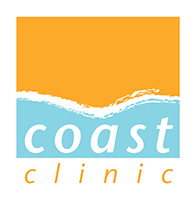If you are suffering from Raynaud’s, you may be interested in the causes and symptomatology. However, you may just be interested in how you can help yourself. If this is you, just scroll down to the ‘Treatment’ section.
It is estimated that 5% of the population are suffering from Raynaud’s(1). Women are nine times more likely than men to suffer from this condition.
Symptoms of Raynaud’s Disease
As with most things in life, symptoms of Raynaud’s Disease can vary from person to person. Typically it will affect hands or toes but it can also affect ear lobes, nose or nipples by reducing the blood flow. This is also called vasospasm and it can result in the body parts to turn white, blue then red. This is not always, but can be, painful or cause sensations of stinging or burning that can last for a few minutes to hours.
Types of Raynaud’s
This condition may be called Raynaud’s Disease, Raynaud’s Phenomenom or Raynaud’s Syndrome but it is basically divided into two types; Primary or Secondary(2).
Primary Raynaud’s
The symptoms in this type are mild and are not associated with any other underlying diseases although it may be associated with subclinical atherosclerosis. This condition is considered benign and typically occurs in people between 15 – 30 years of age.
Secondary Raynaud’s
This type is associated with another unlying illness. This encompasses a broad range of rheumatological, haematolgical, endocrinological and vascular pathologies and the symptoms can be more serious(2). It typically comes on after the age of 35 years.
Risk factors
There are serveral things that can promote blood vessel spasm and contriction associated with Raynaud’s.
- carpal tunnel syndrome
- some medications treating migraines, cancer or high blood pressure
- autoimmune disease e.g. rhematoid arthritis, SLE
- injury from use of vibratory tools e.g. jackhammer etc
- stress or anxiety
Diagnosis
A full history and physical exam is important to pursue in the diagnosis of Raynaud’s as it is often the earliest presentation of an underlying connective tissue or autoimmune disease. If this is suspected then a blood test conducted at your GP’s surgery should give you and needed information.
Treatment
We will not be investigating the treatment of Secondary Raynaud’s here as the causes are so varied and the person will need referral for further investigation. Also, the many drug related treaments that can be involved in both Primary and Secondary Raynaud’s, will not be discussed. What we will discuss are the many things that you can do to alleviate the symptoms associated with Primary Raynaud’s flare ups to help yourself.
- wear clothing that will protect you from the cold
- avoid sudden tempature changes(3)
- avoid repeative injury from vibrator tools such as a jack hammer(3)
- stop smoking(3)
- avoid caffeine products(3)
- manage STRESS (deep breathing, meditation, visualisation)
- regular exercise
Supplements
Much of the research on this subjest is fairly old. There is also a lack of scientific evidence to fully support the use of remedies in the treatment of Raynaud’s.That doesn’t mean supplements don’t help, it just means that it isn’t financially lucrative enough to do research on remedies. However, these may offer some benefit.
- Ginko biloba – Research has been conducted on Ginko biloba in treatment of Primary Raynaud’s. Results indicate it may be effective(4), however, other studies have found result no more effective from a placebo(4).
- Essential fatty acids – could possibly help (5)(6)
- Niacin (Vitamin B3) – could possibly help(7)
Always consult your health practitioner before starting any new regime.
Chiropractic treatment
I’m a Chiropractor – of course I am going to suggest you seek Chiropractic treatment to help improve your body function and posture. But really i mean, seek out the help and advice of any practitioner that is qualified and works for you.
Conclusion
Suffering from Raynaud’s disease? Well firstly, it is important to determine whether you have Primary or Secondary Raynaud’s.
There are many things you can do to reduce flare-ups such as manage your stress, stop smoking, avoid caffeine and sudden temperature changes as well as maintaining a regular exercise regime and of course, see your chiropractor or practitioner.
Written by Anne French Chiropractor and Functional Medicine Practitioner
References
- Prevalence, risk factors and associations of primary Raynaud’s phenomenon: systematic review and meta-analysis of observational studies
- Raynaud’s phenomemon-anupdate on diagnosis, classification and management
- A review of Raynaud’s disease
- The use of Ginko biloba in the treatment of Raynaud’s Disease: a double blind placebo controlled trial
- The beneficial effects of omega 3 and omega 6 essential fatty acid supplementation on red blood cell rheology
- Fish-oil dietary supplementation in patients with Raynaud’s phenomenom: a double-blind, controlled, prospective study
- A double blind randomised placebo controlled trial of hexopal in primary Raynaud’s disease

